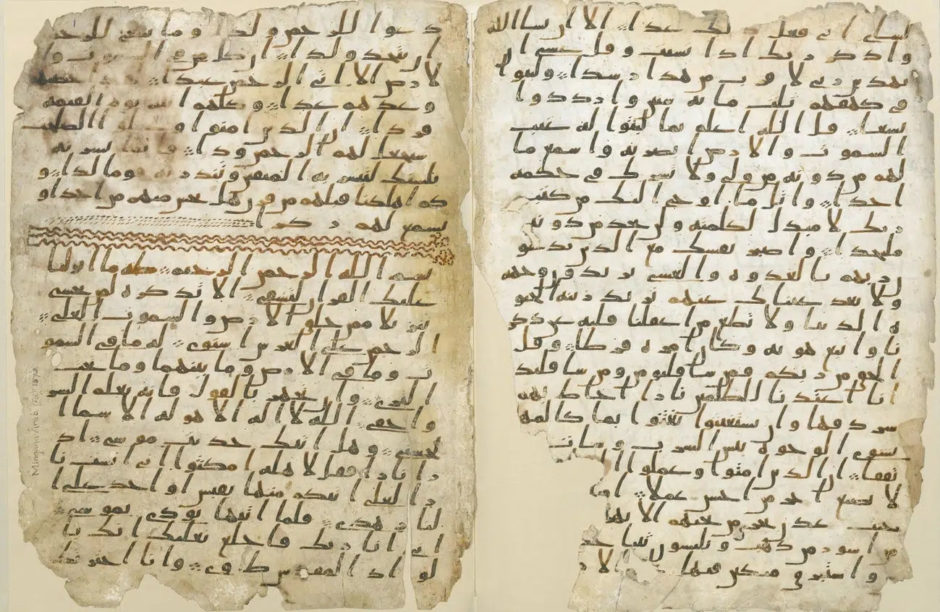As a prominent and vital part of our global linguistic landscape, the Arabic language plays a significant role in global communication, culture, and politics. With a rich history and evolution, the Arabic language has been shaped by its use in religious, cultural, and political contexts.
The Origin of the Arabic Language
Arabic has its roots in the Semitic languages spoken by people in the Arabian Peninsula around the 1st century CE (Versteegh, 2014). Other Semitic languages, including Aramaic, Akkadian, and Canaanite, influenced the earliest forms of Arabic. Inscriptions dating back to the 4th century CE contain some of the oldest written records of the Arabic language.
These early forms can be grouped into Old Arabic and Old North Arabian. People spoke Old Arabic in the central and southern parts of the Arabian Peninsula, while Old North Arabian was spoken in the northern part (Al-Jallad, 2018). Over time, trade and cultural exchanges led to the evolution of these early forms, and other languages such as Persian and Greek influenced their development.
The Spread of the Arabic Language
The expansion of the Islamic empire is closely linked to the spread of the Arabic language. After the advent of Islam in the 7th century, the Islamic caliphate adopted Arabic as its official language, and the Quran, the holy book of Islam, originally given in oral form, was written down in Arabic. As the Islamic empire expanded, Arabic became the primary language for administration, scholarship, and literature, contributing to its widespread adoption across the newly conquered territories.
Between the 7th and 10th centuries, the Islamic empire reached its peak, encompassing vast territories from Spain and North Africa to the borders of modern-day India and China (Hoyland, 2015). The spread of the Arabic language facilitated cultural exchange and influenced the development of other languages, such as Persian, Turkish, and Urdu, which borrowed numerous words and phrases from Arabic.
The Evolution of the Arabic Language
Over the centuries, the Arabic language has evolved and diversified. The different forms of Arabic can be broadly classified into Classical Arabic, Modern Standard Arabic (MSA), and dialectal Arabic. Classical Arabic, the language of the Quran, served as the standard written and spoken language during the early Islamic period. MSA, which developed from Classical Arabic, is the contemporary standard written form of the language, used in formal contexts such as literature, media, and education.
Political and religious events have played a critical role in shaping the evolution of the Arabic language. The various Islamic dynasties and empires that ruled different regions contributed to the development of regional Arabic dialects, which were influenced by the local languages and cultures. Additionally, the period of European colonialism in the Arab world, particularly the French and British rule, introduced new words and concepts to the Arabic language.
Moreover, globalization has impacted the Arabic language, as it has adopted new terms from various languages to keep up with technological and societal advancements. For example, the Arabic language has incorporated words from English, such as “كمبيوتر” (computer) and “انترنت” (internet), to reflect the modern world.
Modern Arabic
Today, over 420 million people around the world speak the Arabic language, making it the fifth most spoken language globally (Simons & Fennig, 2018). MSA, the standard written form, is used in formal contexts, while dialectal Arabic is spoken in daily life. Significant differences exist between Arabic dialects from region to region, and sometimes even between cities within the same country, making it difficult for speakers from different regions to understand one another.
The influence of technology and media in shaping the Arabic language cannot be understated. The internet, social media, and satellite television have helped bridge the gap between dialects and promoted a more standardized form of spoken Arabic. Furthermore, these platforms have allowed the Arabic language to reach new audiences and facilitated communication between Arabic speakers worldwide.
Embracing the legacy of the Arabic language
In conclusion, the cultural, religious, and political developments of the Arab world are deeply intertwined with the history and evolution of the Arabic language. From its origins in the Arabian Peninsula, the language has spread across vast territories, influencing and being influenced by other languages and cultures. Today, the Arabic language continues to evolve, adapting to the needs of the modern world through technology and media.
The significance of the Arabic language in today’s global society is immense. It is a rich and diverse language that has made indelible contributions to human knowledge and culture. As we reflect on the history and evolution of the Arabic language, it is essential to appreciate its enduring legacy and to encourage further study and exploration of this fascinating language.
For those interested in delving deeper into the history of the Arabic language, several excellent resources are available. Some recommendations include “The Arabic Language” by Kees Versteegh, “Arabic: A Linguistic Introduction” by Karin C. Ryding, and “Arabic through the Qur’an” by Alan Jones.
References
Al-Jallad, A. (2018). An Outline of the Grammar of the Safaitic Inscriptions. Brill.
Hoyland, R. G. (2015). In God’s Path: The Arab Conquests and the Creation of an Islamic Empire. Oxford University Press.
Simons, G. F., & Fennig, C. D. (Eds.). (2018). Ethnologue: Languages of the World (21st ed.). SIL International.
Versteegh, K. (2014). The Arabic Language. Edinburgh University Press.


 RSS - Posts
RSS - Posts